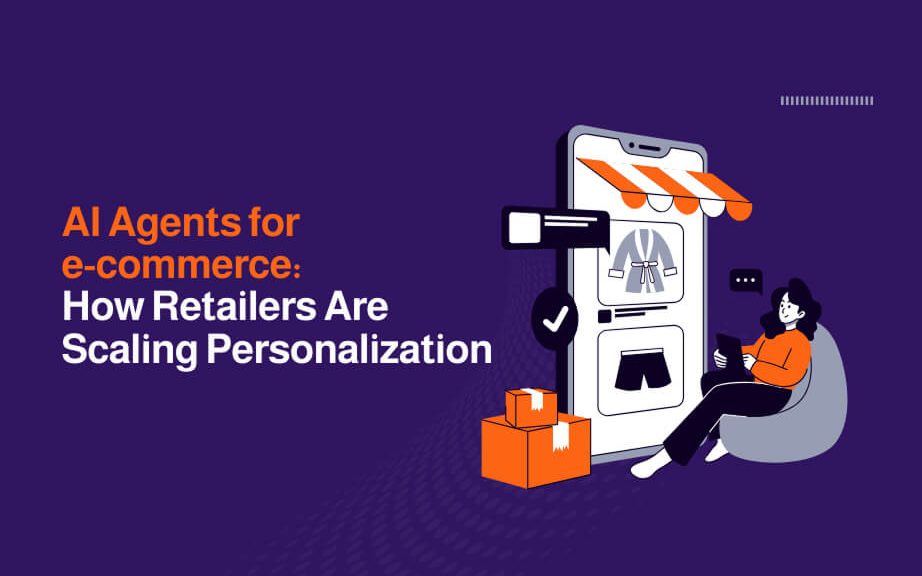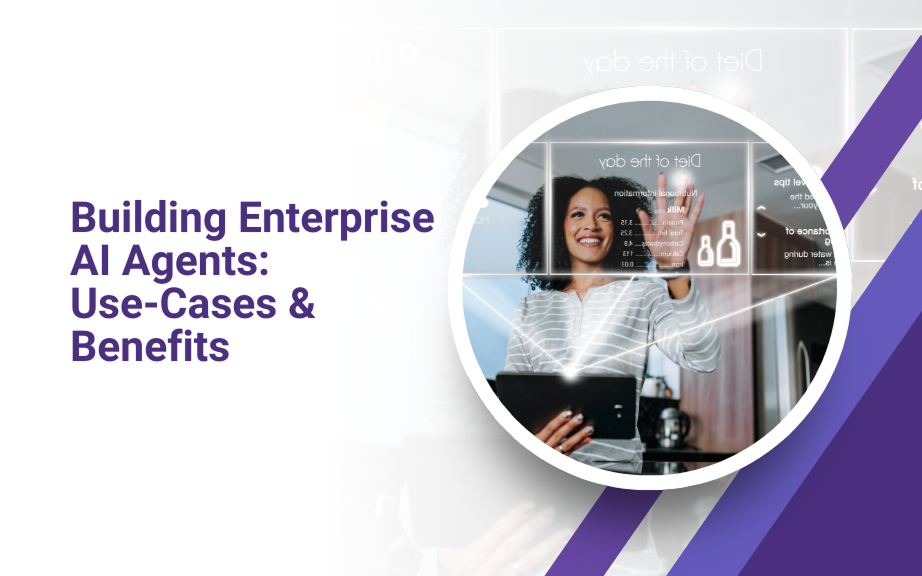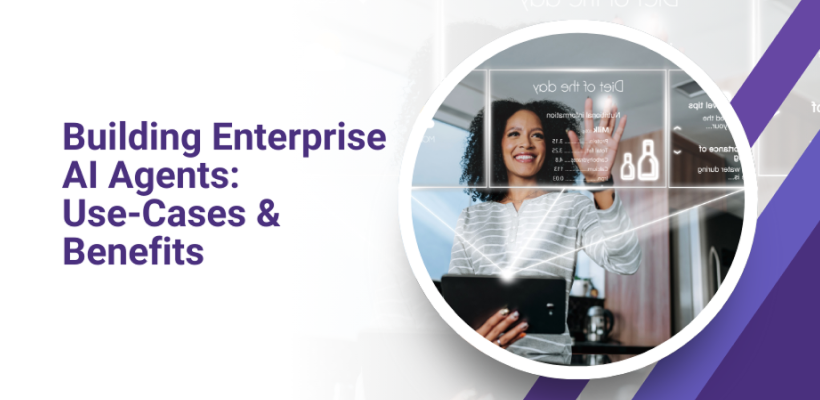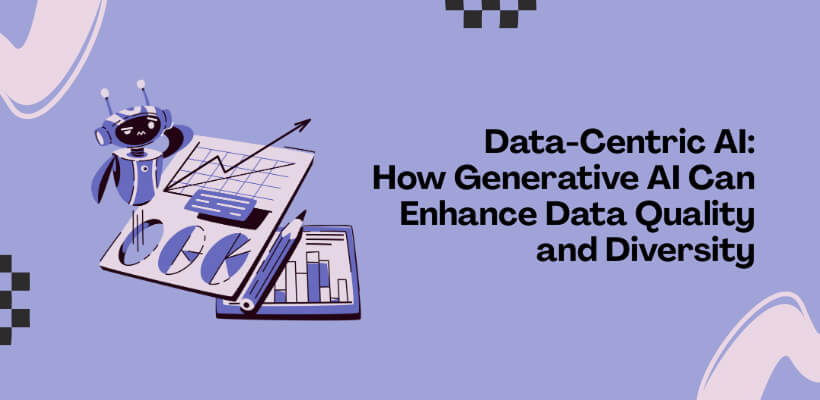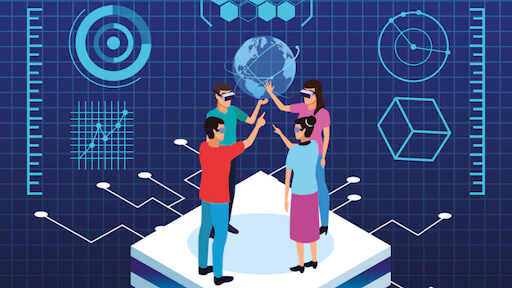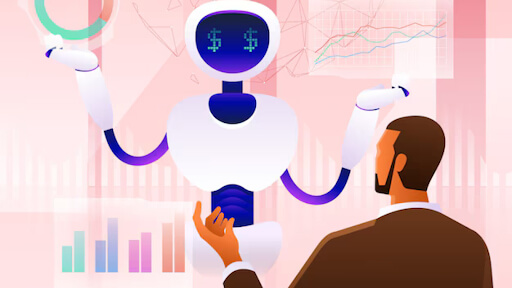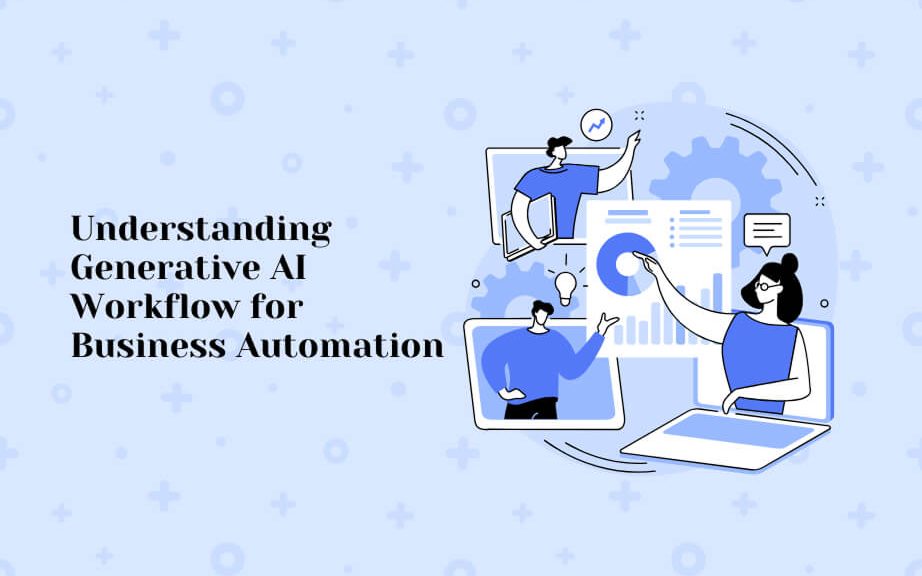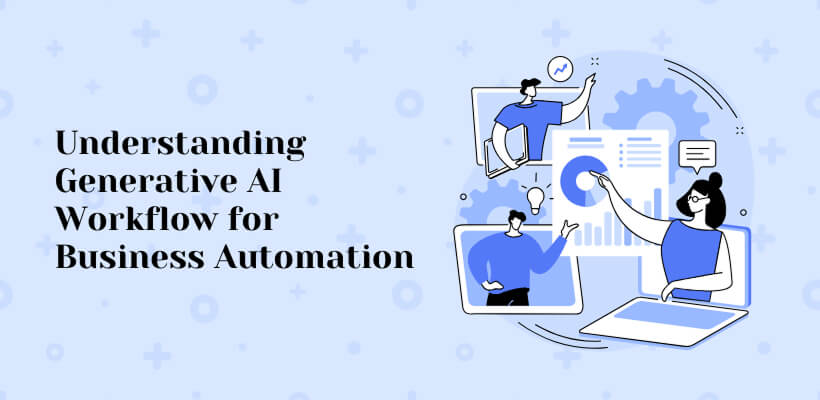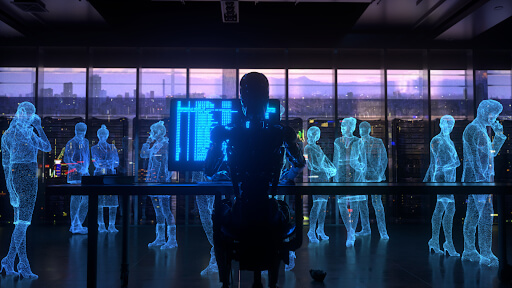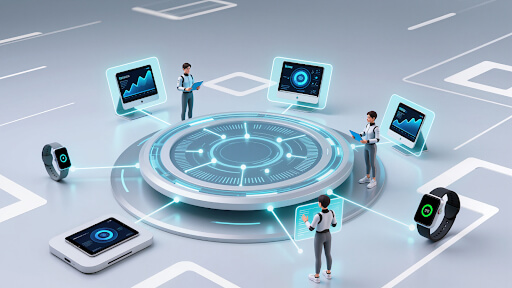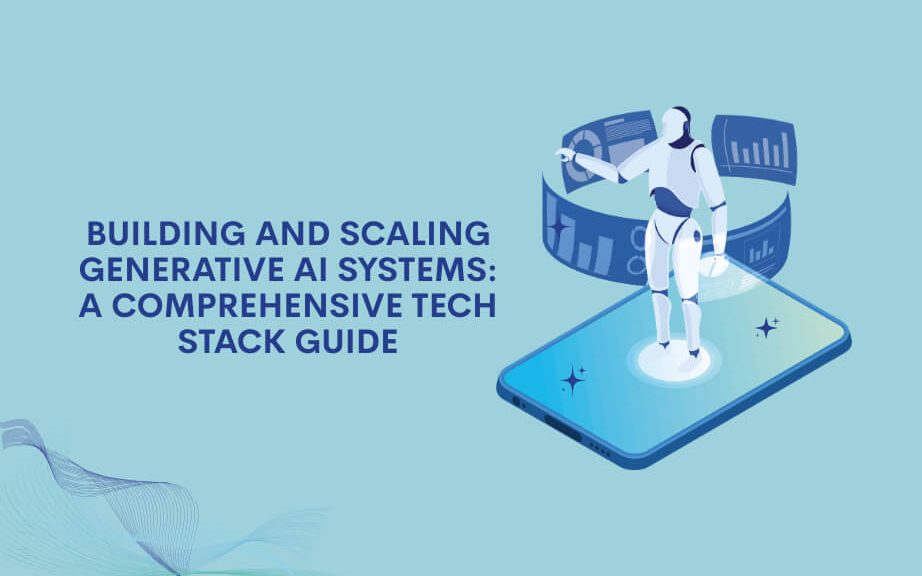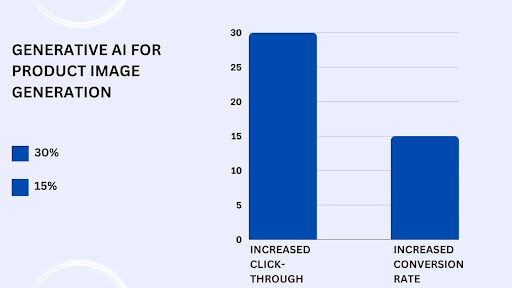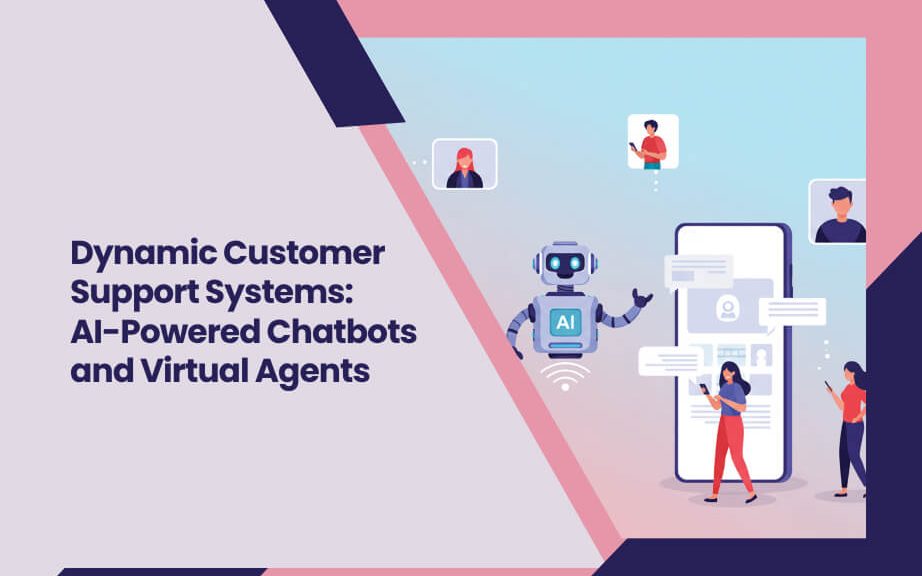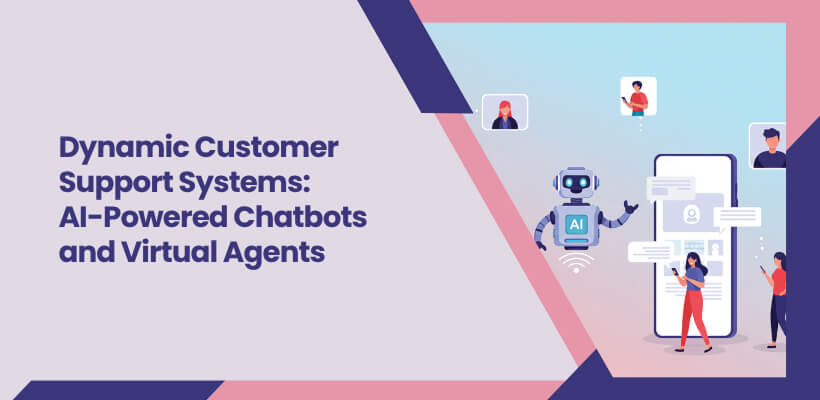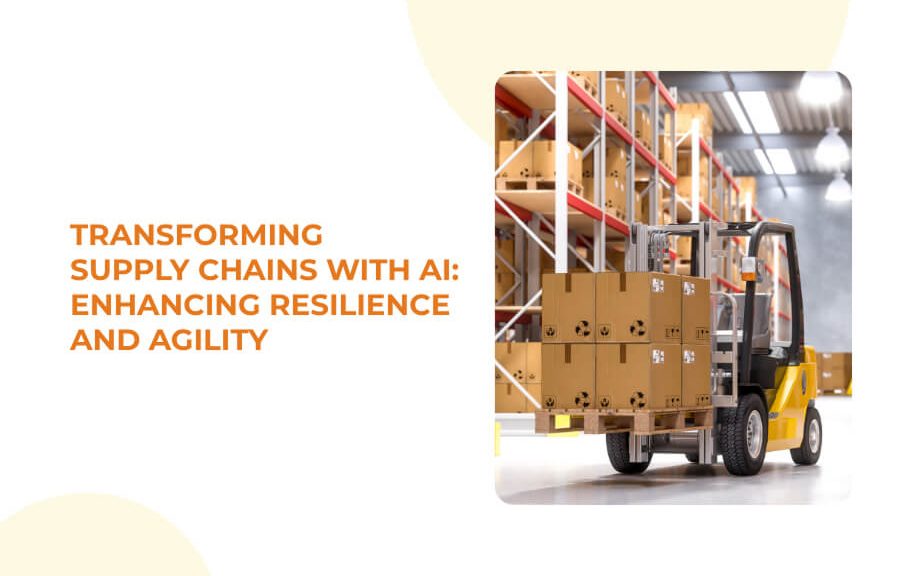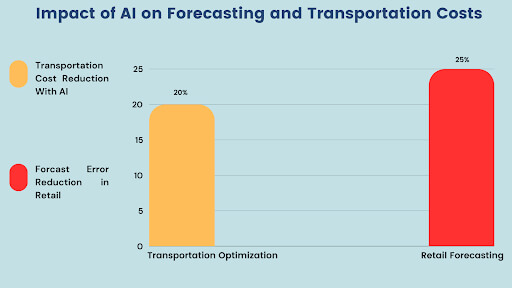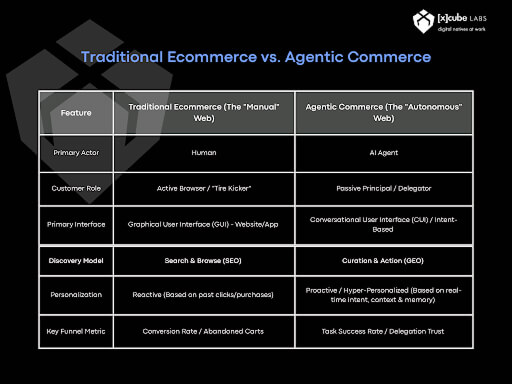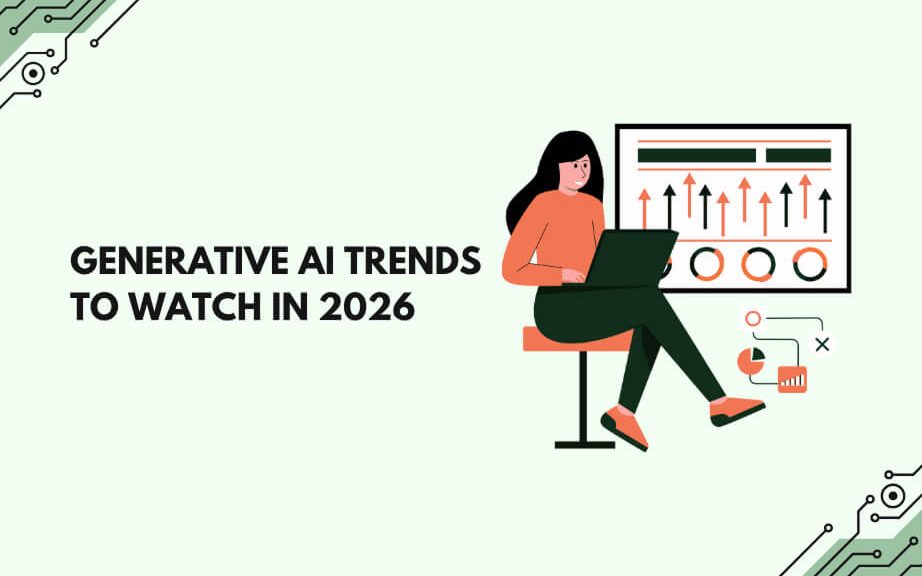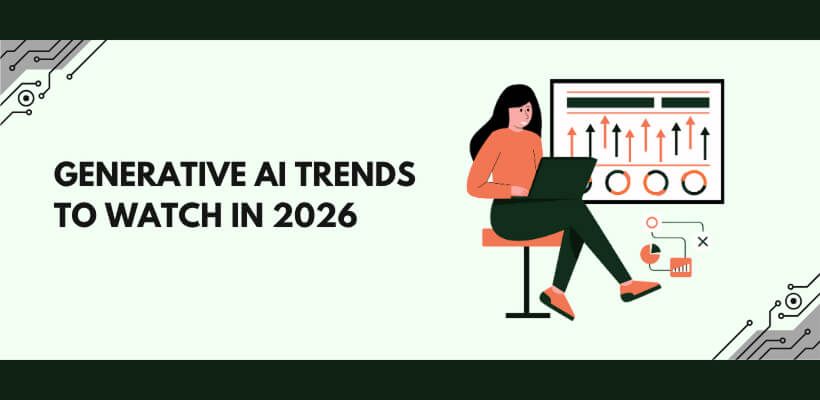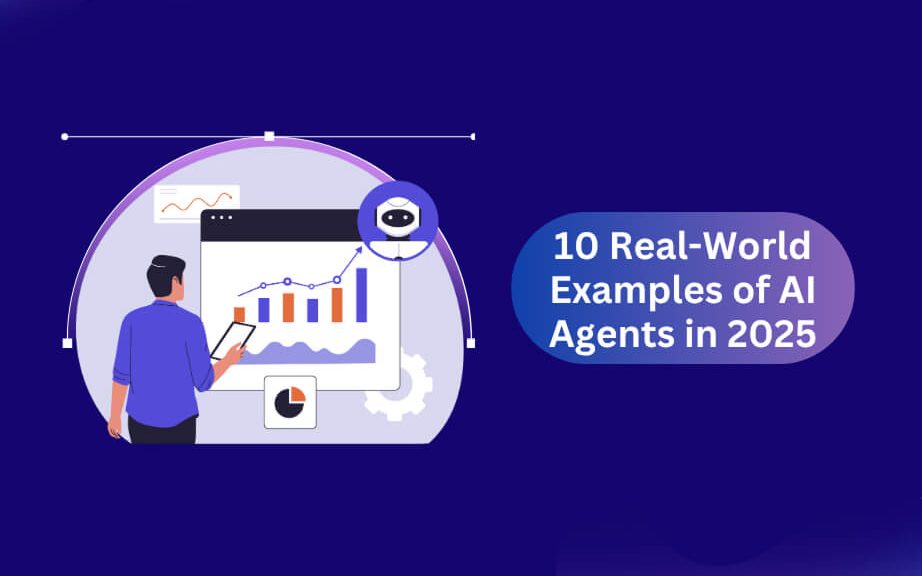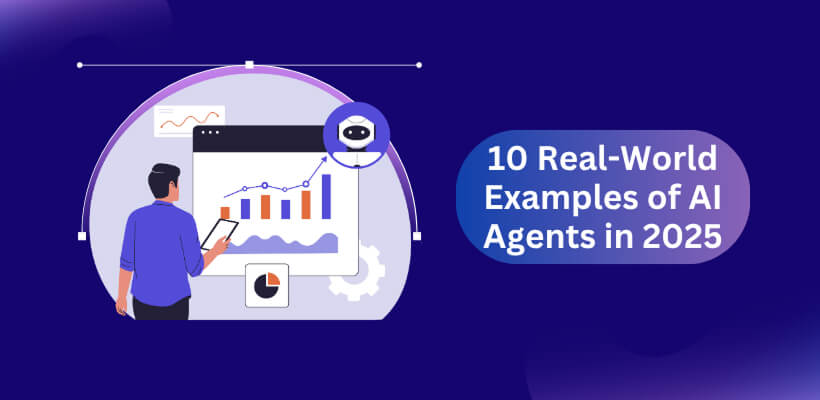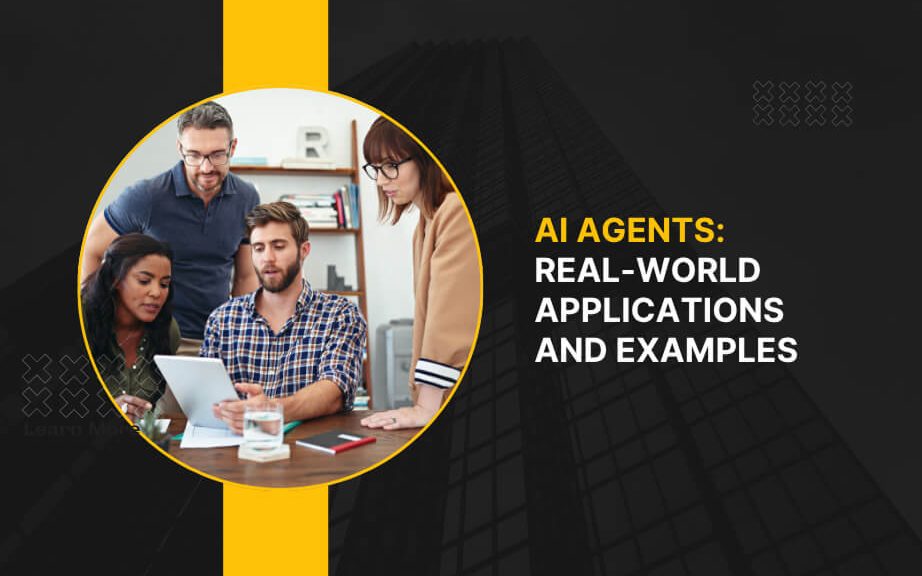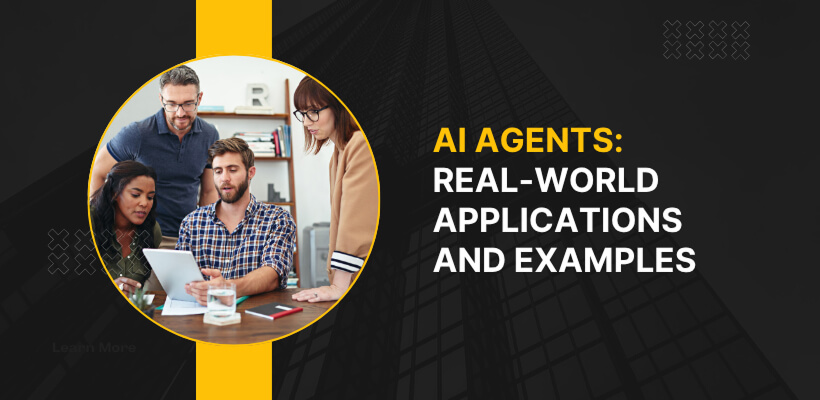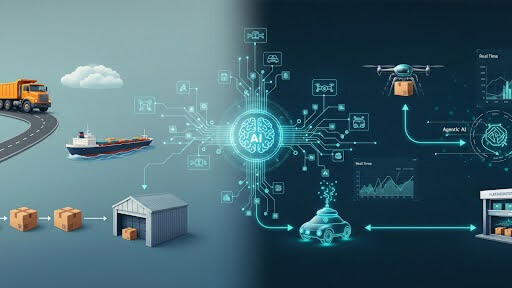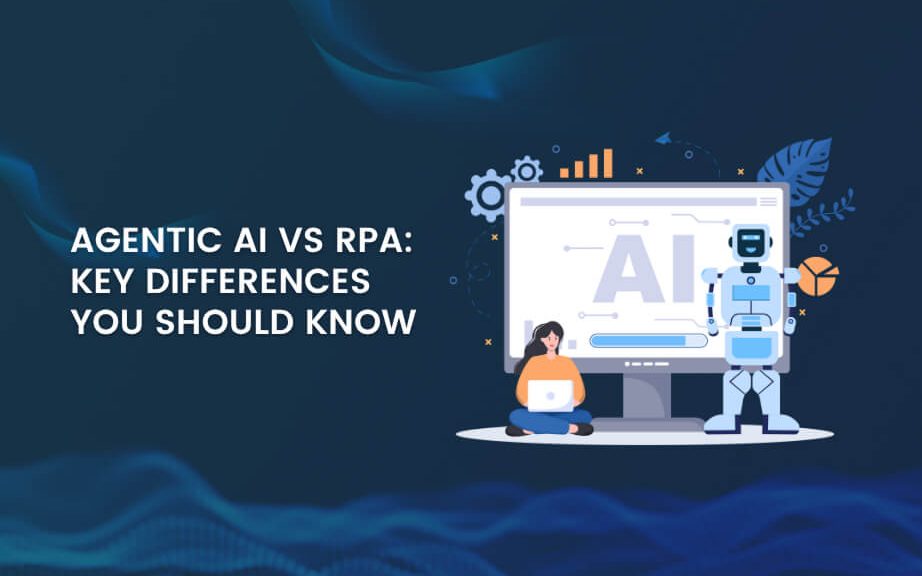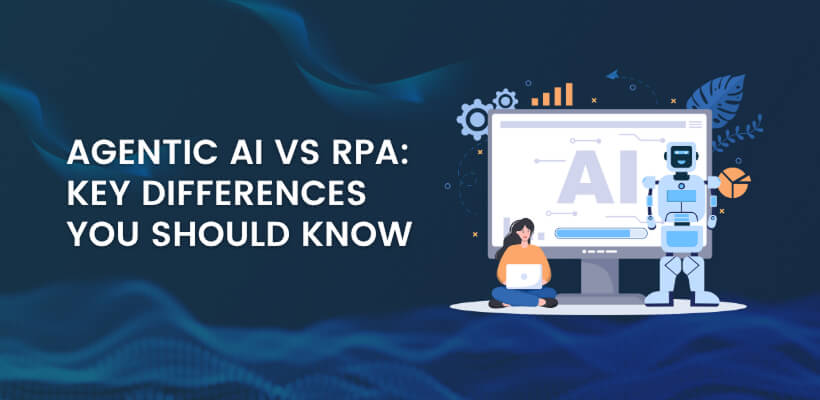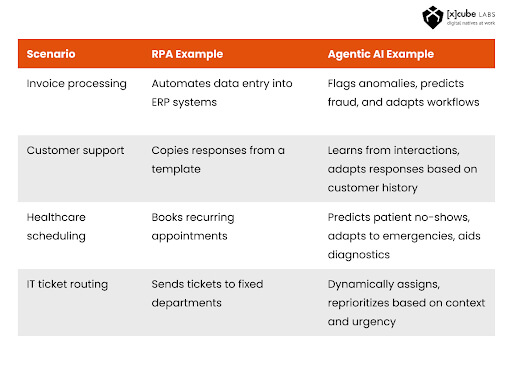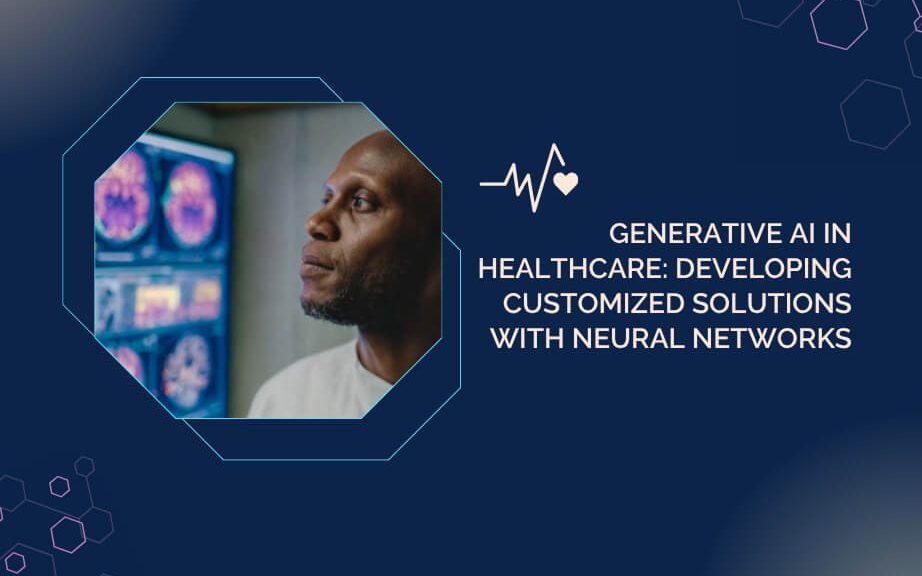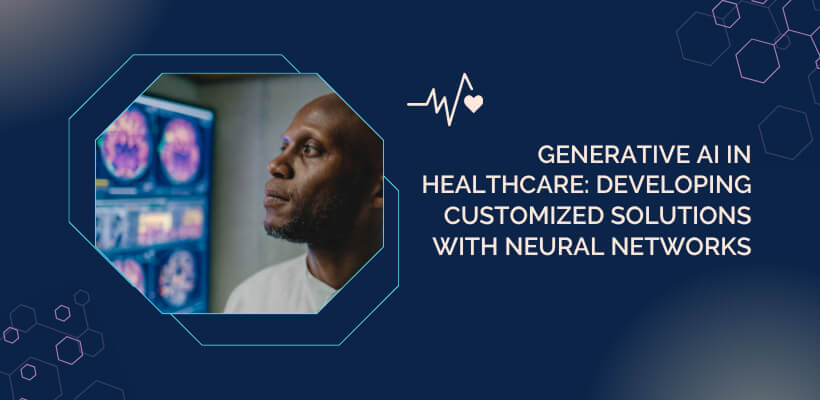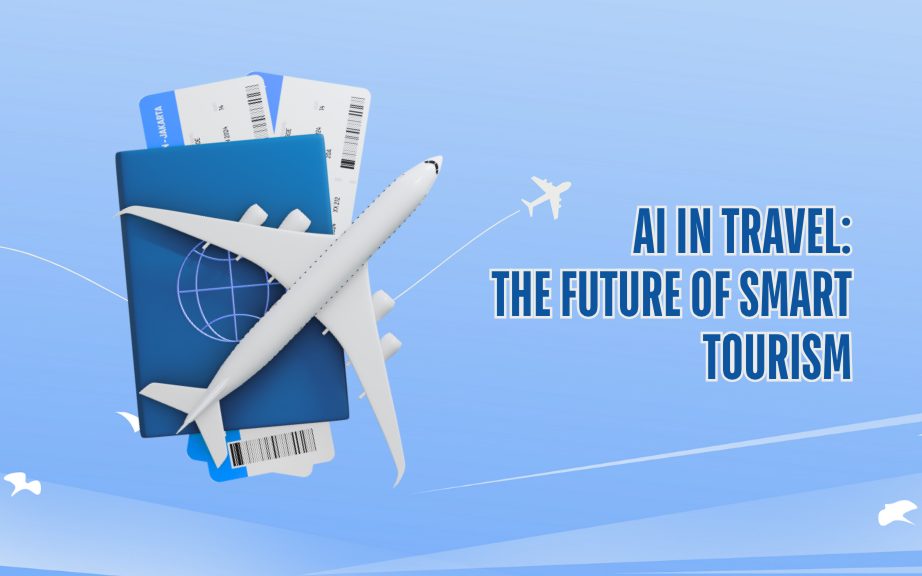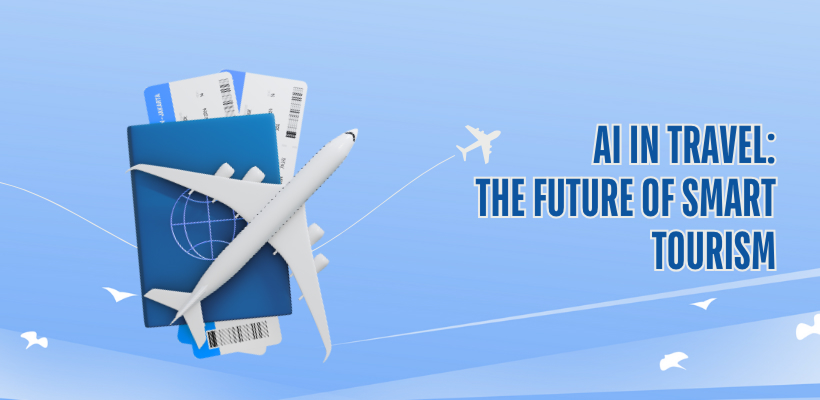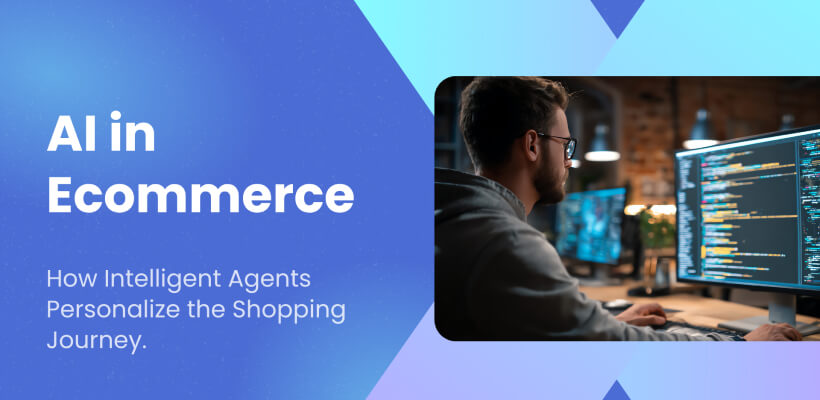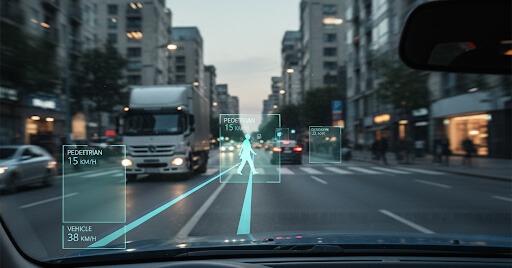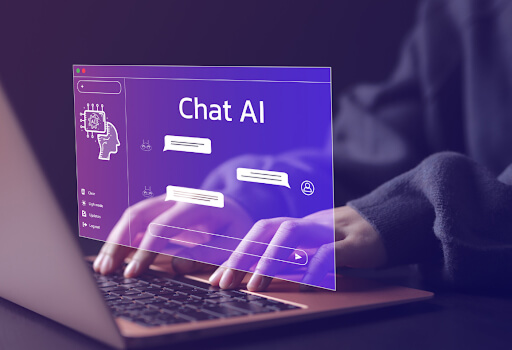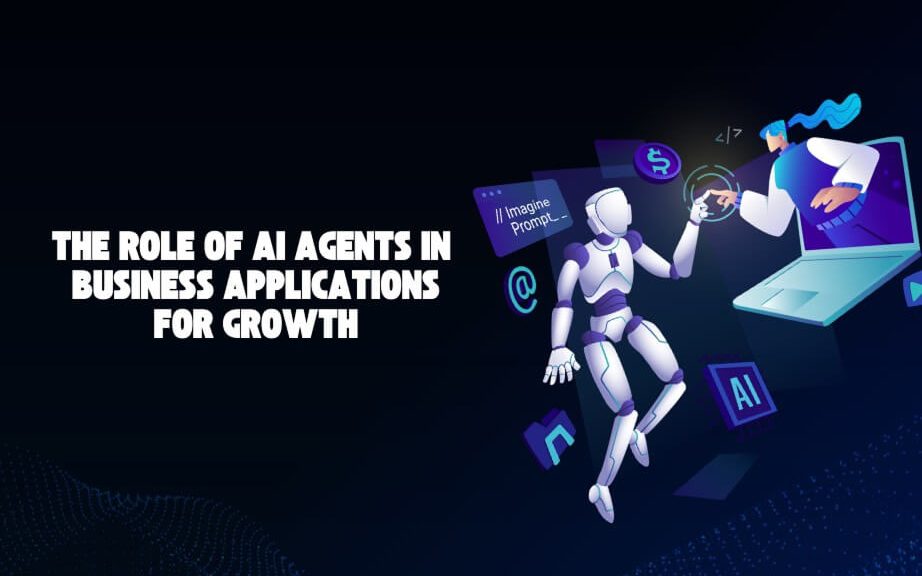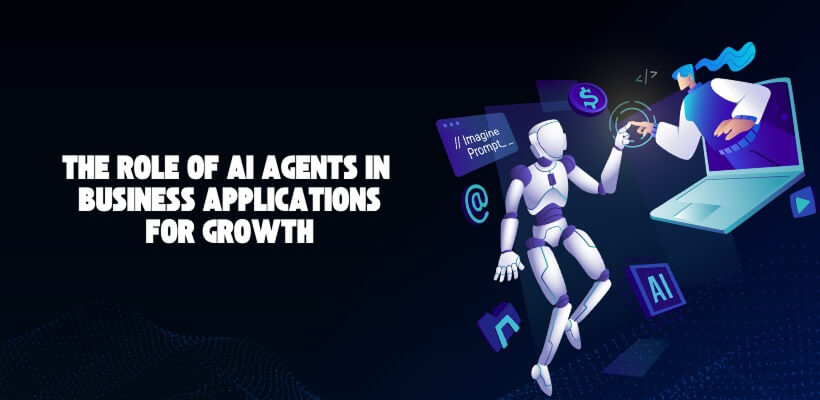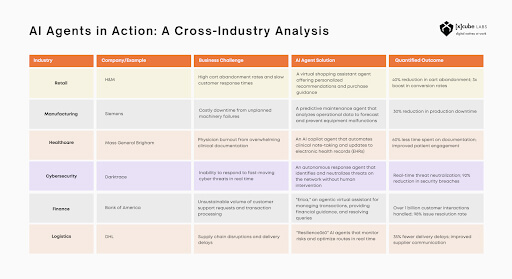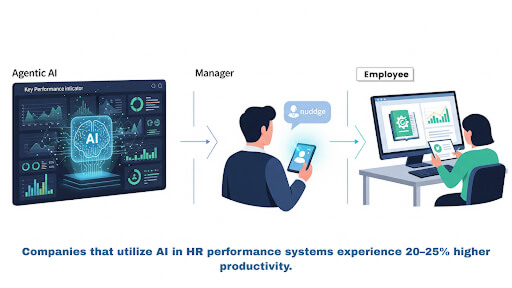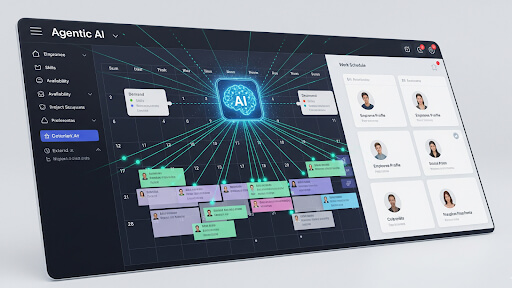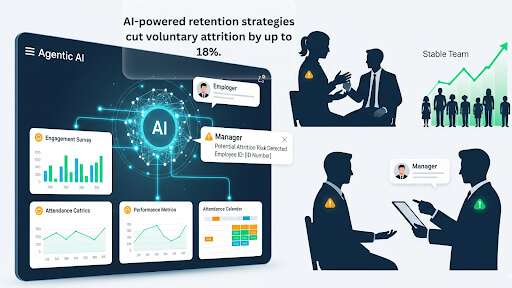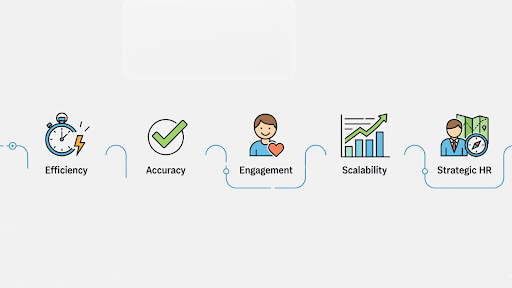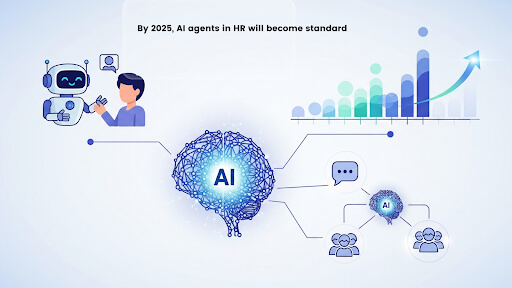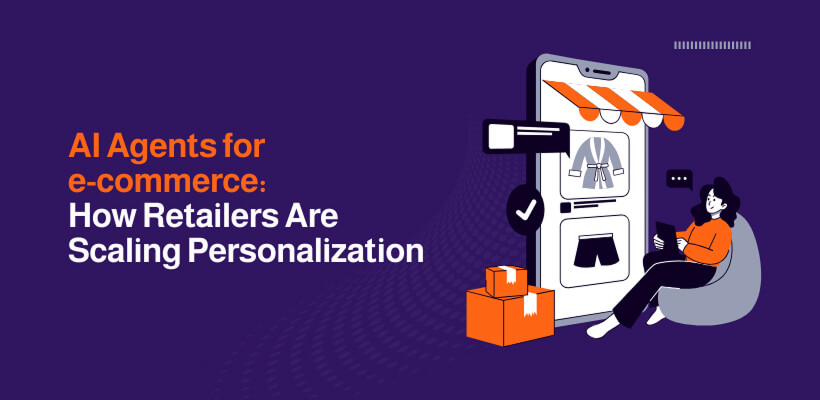
Personalization has always been the heart of great retail. Whether it was a store associate remembering a customer’s preferences or a product expert guiding shoppers toward the right fit, the best experiences were always personal and human. But with modern e-commerce operating at a massive scale, it’s no longer possible for retailers to deliver that level of one-to-one attention manually.
That’s why AI agents for e-commerce are becoming essential. These intelligent systems can understand customer behavior, anticipate needs, recommend the right products, and automate thousands of micro-interactions that once required an entire support or merchandising team. They don’t replace human insight; they extend it across millions of shoppers.
Let’s break down how retailers are using AI agents to rewrite personalization, what these systems actually do, and how leading brands are using them to drive growth, loyalty, and operational efficiency.
What Are AI Agents for e-commerce?
An AI agent for e-commerce is an intelligent, autonomous system powered by machine learning, natural language processing, and behavioral modeling. Unlike traditional chatbots that follow scripts or answer basic questions, AI agents can:
- Understand complex user intent
- Track context across long sessions
- Analyze customer behavior in real time
- Recommend products with accuracy
- Perform tasks like returns, exchanges, and order updates
- Adapt based on outcomes and historical patterns
They are dynamic, learning systems—not rule-based programs.
In the e-commerce world, AI agents show up as:
- Virtual shopping assistants
- Product recommendation engines
- Automated customer support agents
- Post-purchase engagement bots
- Merchandising optimization systems
- AI-driven search and discovery tools
What makes them so transformative is their ability to blend human-like reasoning with data-driven precision.
Why Personalization Matters More Than Ever in e-commerce
Retailers know personalization isn’t a bonus anymore—it’s a requirement. Here’s what shoppers expect today:
- Instant recommendations
- Curated product feeds
- Tailored promotions
- Relevant email and SMS content
- Guidance to the “right” product quickly
- Faster decisions with less effort
Customers want to feel understood. They want shopping to feel easy. And they prefer brands that remember who they are, what they like, and how they shop.
The challenge? Humans can’t do personalization at that scale. Even traditional recommendation engines are too limited because they rely on static profiles or broad segmentation. Modern shoppers move fast, and their preferences shift constantly.
AI agents for e-commerce solve that problem by learning in real time and adjusting instantly.
How AI Agents Transform e-commerce Personalization
Let’s dive into the areas where AI agents are making the biggest impact.
1. Hyper-Personalized Product Recommendations
Traditional recommendation engines group customers into categories. AI agents evaluate individuals.
They don’t just look at previous purchases—they analyze intent signals across the entire shopping journey:
- Pages viewed
- Items added and removed from carts
- Scroll depth
- Time spent on different product types
- Color, size, and style affinities
- Price sensitivity
- Browsing sequences
- Seasonal preferences
This level of granularity allows AI agents for e-commerce to recommend items that feel handpicked.
Examples of what AI agents can do:
- Show different homepage layouts for each user
- Build personalized product bundles
- Curate “just for you” feeds
- Adjust recommendations based on mood or context
The result: higher conversions, larger cart sizes, and better customer satisfaction.
2. Intelligent Virtual Shopping Assistants
Virtual shopping assistants powered by AI agents act like digital store associates. They don’t just answer questions—they guide the customer journey.
These assistants can:
- Ask clarifying questions
- Identify customer needs
- Suggest products that match preferences
- Compare features
- Explain sizing, fit, materials, and use cases
- Provide real-time recommendations
A customer who says, “I need a jacket for hiking in winter,” gets expert-level help rather than a list of generic jackets.
This is a major leap forward from older chatbots that simply link to product pages.
3. Real-Time Personalization Throughout the Funnel
The magic of AI agents is that they personalize every step—not just the final recommendation.
They can modify:
- Homepage banners
- On-site messages
- Search results
- Product sorting
- Checkout incentives
- Post-purchase communication
For example:
- A price-sensitive shopper may see discounts or budget-friendly picks.
- A loyal customer might see early access to new arrivals.
- A gift shopper could see themed collections or curated bundles.
AI agents for e-commerce treat every shopper like a unique profile and adjust the experience accordingly.
4. Smarter Search and Discovery
Site search is a quiet revenue driver, and AI agents radically improve it.
These systems understand natural language queries like:
- “Shoes for flat feet”
- “Best gifts for a 12-year-old girl under $40”
- “Sustainable black dresses for summer”
They interpret intent, not just keywords.
They surface relevant products even when the customer doesn’t know what to search for.
AI-driven search can:
- Auto-correct spelling
- Understand synonyms
- Interpret product attributes
- Personalize results by user behavior
This turns search into a high-converting interaction instead of a frustrating dead end.
5. Automated Customer Support That Feels Personal
AI agents don’t just sell—they serve.
In support, they take on tasks like:
- Order tracking
- Returns and exchanges
- Refund updates
- Subscription management
- Warranty questions
- Product troubleshooting
- Delivery updates
Support used to be reactive. AI agents make it proactive.
For example:
- If a shipment is delayed, the AI agent can notify the customer automatically.
- If a product is frequently returned due to sizing issues, the AI agent can suggest a better size before purchase.
- If a customer struggles on a checkout page, the AI agent can offer help in real time.
This merges customer satisfaction with operational efficiency.
6. Dynamic Pricing and Personalized Offers
AI agents help retailers optimize pricing strategies without coming across as random or inconsistent.
They analyze:
- Purchase patterns
- Cart behavior
- Price sensitivity
- Inventory levels
- Competitive signals
Then they customize:
- Discounts
- Bundles
- Loyalty rewards
- Free shipping thresholds
For example:
- A hesitant shopper might get a “buy now” incentive.
- A loyal shopper might get an exclusive early-access offer.
- A high-value customer may get personalized bundles curated to their taste.
This isn’t guesswork—it’s data-driven personalization at scale.
7. Post-Purchase Engagement That Builds Lifetime Value
Many retailers focus only on conversion. AI agents focus on the entire relationship.
After a purchase, they can:
- Recommend complementary products
- Track satisfaction signals
- Identify churn risks
- Personalize loyalty offers
- Suggest subscription upgrades
- Trigger follow-up journeys based on behavior
For example, if someone buys a camera, the AI agent might suggest:
- Lenses
- Cases
- Tripods
- Editing software
- Workshops
But it won’t blast them with everything—it will tailor recommendations to the customer’s specific interests.

Why AI Agents Matter for Retailers Right Now
Retailers aren’t just using AI to keep up—they’re using it to lead.
Here’s why adoption is accelerating:
1. Customers expect instant, tailored experiences
Patience is low. Competition is high. Shoppers want relevance immediately.
2. Manual personalization doesn’t scale
No human team can analyze millions of signals in real time.
3. Margins are tighter than ever
AI agents cut operational costs while improving outcomes.
4. Competition is rising
DTC brands, marketplaces, and global retail players all fight for the same customer base.
5. Inventory and supply chain complexity is increasing
AI agents help reduce stockouts, returns, and mismatches.
6. Loyal customers are harder to retain
AI-driven personalization deepens engagement and boosts lifetime value.
For every retailer—from apparel to electronics to beauty to home goods—AI agents are fast becoming the backbone of digital commerce.
How Retailers Can Start Implementing AI Agents
If you’re planning to adopt AI agents for e-commerce, here’s a practical roadmap:
Step 1: Identify High-Impact Use Cases
Start where AI can immediately improve performance:
- Product recommendations
- On-site personalization
- Search and discovery
- Automated support
- Post-purchase journeys
- Pricing and promotions
Pick one or two areas and build from there.
Step 2: Ensure Your Data Is Ready
AI agents rely on clean, structured, accessible data. That includes:
- Product metadata
- Inventory information
- SKU attributes
- Customer profiles
- Behavioral data
- Purchase history
- Return data
- Support logs
The better your data foundation, the smarter your AI agent becomes.
Step 3: Integrate With Your Tech Stack
AI agents perform best when fully connected to:
- e-commerce platforms
- CRM systems
- Order management systems
- Inventory tools
- Support platforms
- CDPs and analytics tools
Integration enables end-to-end automation.
Step 4: Create a Hybrid Human + AI Workflow
AI agents handle:
- Repetitive tasks
- High-volume inquiries
- Personalized recommendations
- Real-time adjustments
Humans handle:
- Complex cases
- Emotional conversations
- Edge scenarios
- Strategic decisions
This balance creates the best outcomes.
Step 5: Measure Performance and Iterate
Track metrics like:
- Conversion rates
- Average order value
- Customer satisfaction
- Cart abandonment
- Return rate reduction
- Operational cost savings
- Response time improvements
Then refine the AI model based on real-world performance.
What the Future Looks Like for AI Agents in e-commerce
The next generation of e-commerce will be built around AI-first experiences. Here are the trends to watch:
1. Fully autonomous shopping journeys
AI agents guiding a shopper from discovery to checkout without friction.
2. Emotionally aware virtual assistants
Understanding tone, frustration, excitement, and preference signals.
3. Multimodal shopping
Voice, video, augmented reality, and real-time product visualization.
4. Zero-party and first-party data powering deeper personalization
Customers voluntarily sharing preference data through interactive AI experiences.
5. AI-driven merchandising optimization
Dynamic product arrangement, automated category management, and predictive inventory recommendations.
6. AI-powered marketplaces
Where AI agents help sellers optimize listings, pricing, targeting, and customer engagement.
The retailers who adapt now will set the benchmark for the next decade of digital commerce.
FAQs: AI Agents for e-commerce
1. What are AI agents for e-commerce?
AI agents for e-commerce are intelligent systems that use machine learning, natural language processing, and behavioral analytics to help shoppers find products, get support, and receive personalized recommendations. They go beyond basic chatbots by understanding intent, learning from interactions, and autonomously performing tasks.
2. How do AI agents improve personalization in e-commerce?
AI agents analyze real-time signals—browsing patterns, purchase history, preferences, price sensitivity, and context—to deliver recommendations and experiences tailored to each individual shopper. This creates highly relevant interactions that increase conversions and improve customer satisfaction.
3. Are AI agents and chatbots the same thing?
Not exactly. Traditional chatbots follow rules or scripts. AI agents for e-commerce are more advanced—they understand natural language, adapt based on outcomes, and can carry out actions like placing orders, managing returns, or updating customer profiles.
4. Can AI agents help reduce cart abandonment?
Yes. AI agents can offer personalized incentives, answer questions instantly, suggest alternatives, help with sizing or compatibility concerns, and guide shoppers through checkout. These interventions reduce friction and improve completion rates.
5. What kind of data do AI agents need to work effectively?
AI agents rely on clean, structured data such as product attributes, customer profiles, browsing behavior, purchase history, inventory information, and support interactions. The richer the data, the smarter and more accurate the AI outputs.
6. Do AI agents replace human customer service teams?
No. AI agents handle routine, high-volume inquiries and repetitive tasks, while human agents focus on complex, emotional, or specialized scenarios. The best results come from a hybrid model where humans and AI work together.
7. How can retailers get started with AI agents?
Start with one or two high-impact use cases—like product recommendations, search optimization, or automated support—ensure data readiness, integrate with core systems, and train internal teams to collaborate with AI. From there, scale gradually.
8. What are the biggest benefits of AI agents for e-commerce?
Key benefits include higher conversions, personalized shopping journeys, reduced operational costs, improved customer satisfaction, better search accuracy, and more efficient support. They also help retailers understand customer behavior more deeply.
9. Are AI agents safe for handling private customer data?
Yes, as long as retailers implement proper governance, security practices, compliance measures, and transparency. AI agents should operate within a well-defined framework that protects customer information and ensures ethical use.
10. What’s the future of AI agents in e-commerce?
Expect more autonomous agents capable of managing entire customer journeys, emotionally aware interactions, multimodal communication (voice, video, images), predictive shopping experiences, and deeper integration with logistics, inventory, and marketing systems.

Conclusion
AI agents for e-commerce are reshaping how retailers deliver personalization at scale. They combine the intelligence of advanced machine learning with the speed of automation to create shopping experiences that feel intuitive, relevant, and human.
From personalized recommendations to proactive support, dynamic pricing, and post-purchase engagement, AI agents are helping brands operate smarter, faster, and more profitably.
The message is clear: retailers who adopt AI agents today will hold the competitive edge tomorrow.
How Can [x]cube LABS Help?
At [x]cube LABS, we craft intelligent AI agents that seamlessly integrate with your systems, enhancing efficiency and innovation:
- Intelligent Virtual Assistants: Deploy AI-driven chatbots and voice assistants for 24/7 personalized customer support, streamlining service and reducing call center volume.
- RPA Agents for Process Automation: Automate repetitive tasks like invoicing and compliance checks, minimizing errors and boosting operational efficiency.
- Predictive Analytics & Decision-Making Agents: Utilize machine learning to forecast demand, optimize inventory, and provide real-time strategic insights.
- Supply Chain & Logistics Multi-Agent Systems: Enhance supply chain efficiency by leveraging autonomous agents that manage inventory and dynamically adapt logistics operations.
- Autonomous Cybersecurity Agents: Enhance security by autonomously detecting anomalies, responding to threats, and enforcing policies in real-time.
- Generative AI & Content Creation Agents: Accelerate content production with AI-generated descriptions, visuals, and code, ensuring brand consistency and scalability.
Integrate our Agentic AI solutions to automate tasks, derive actionable insights, and deliver superior customer experiences effortlessly within your existing workflows.
For more information and to schedule a FREE demo, check out all our ready-to-deploy agents here.
 1-800-805-5783
1-800-805-5783